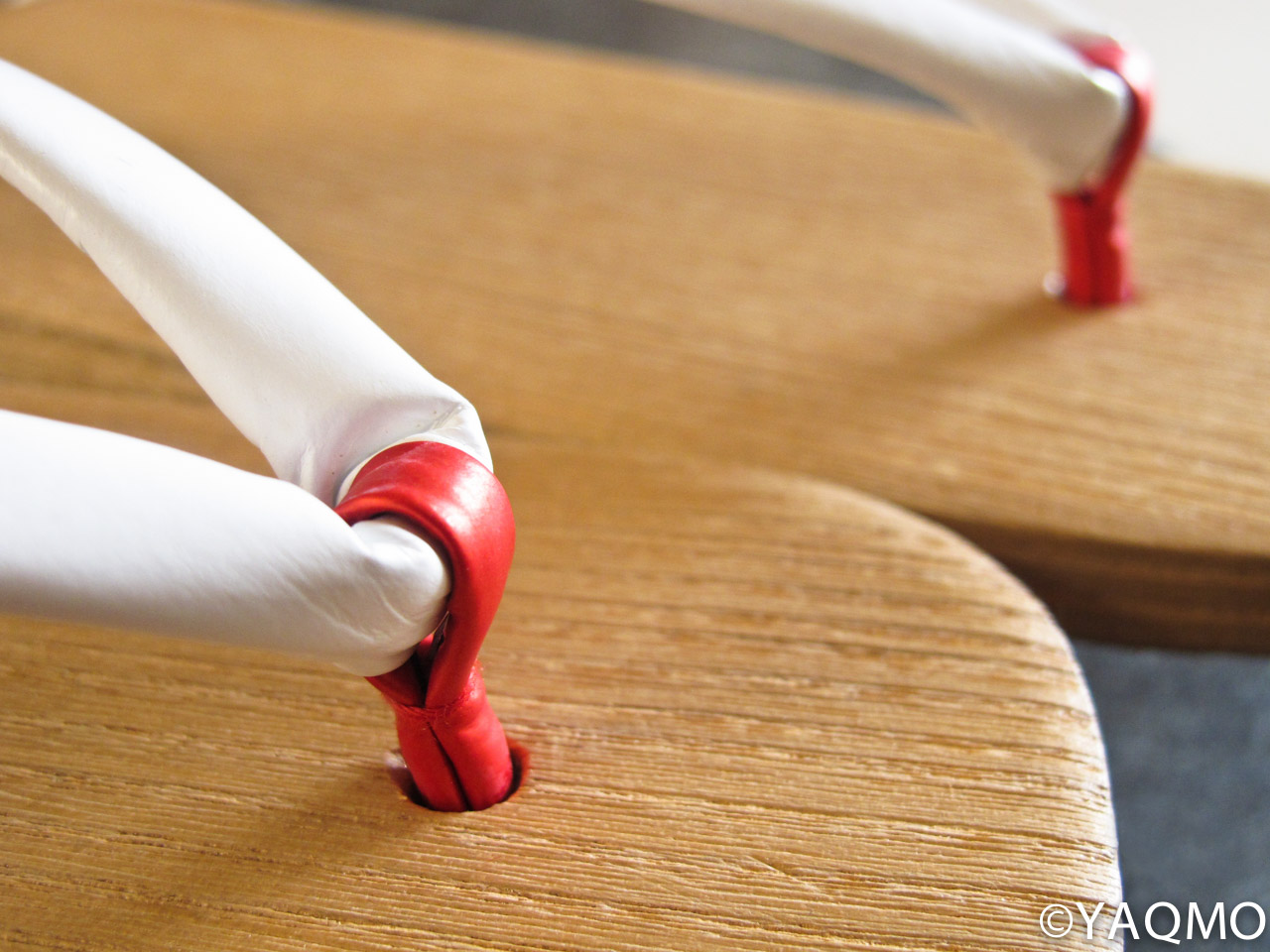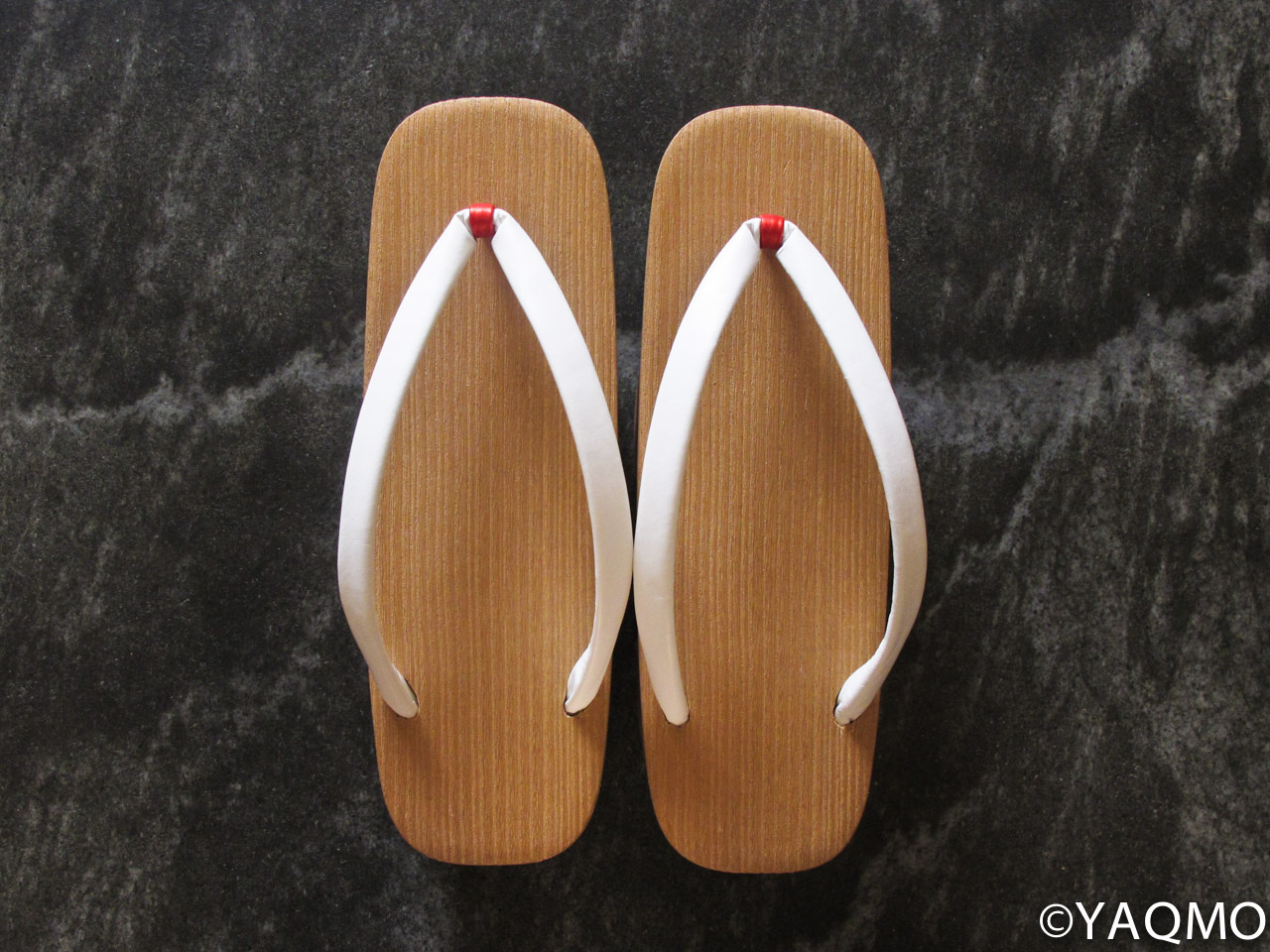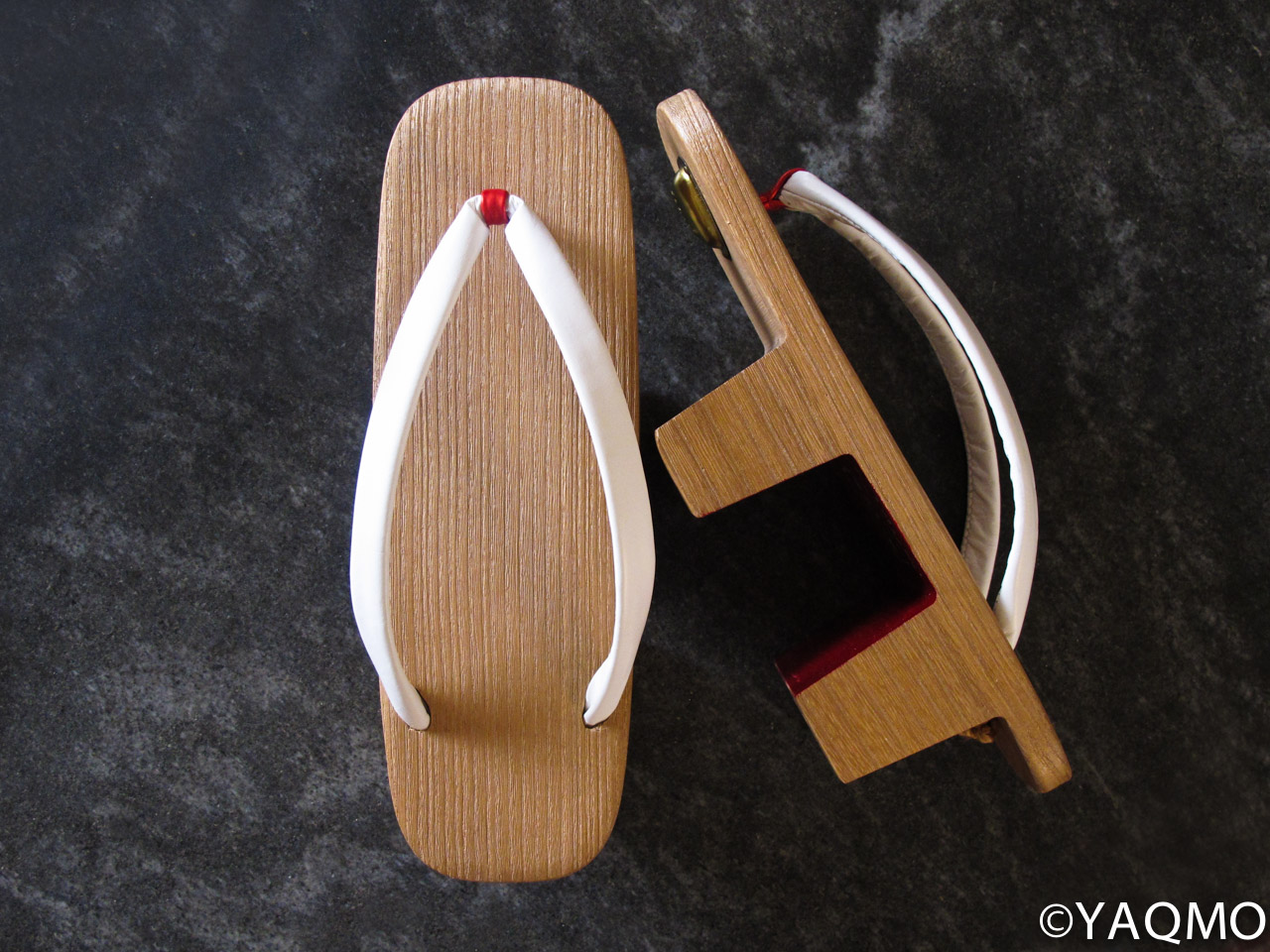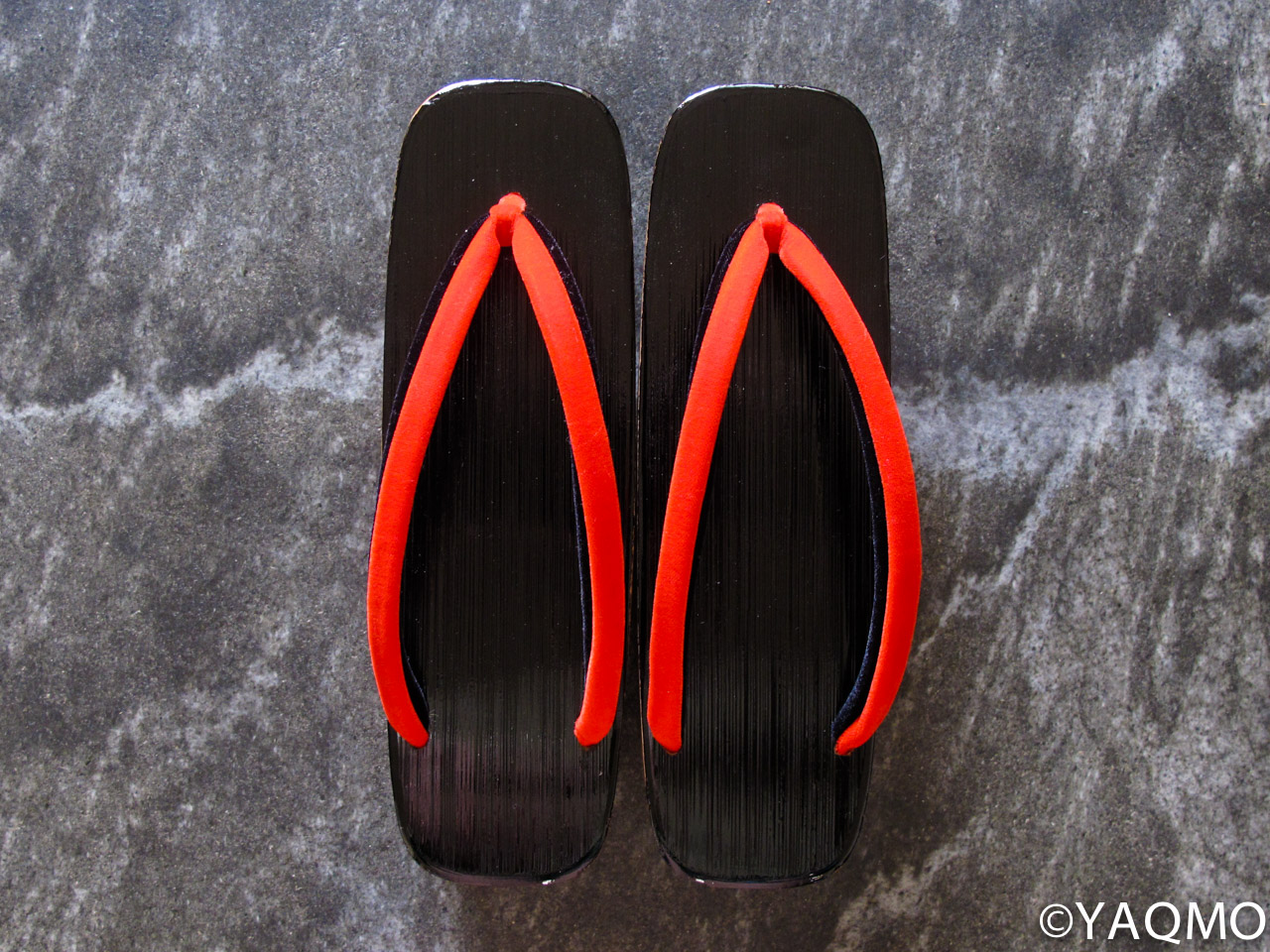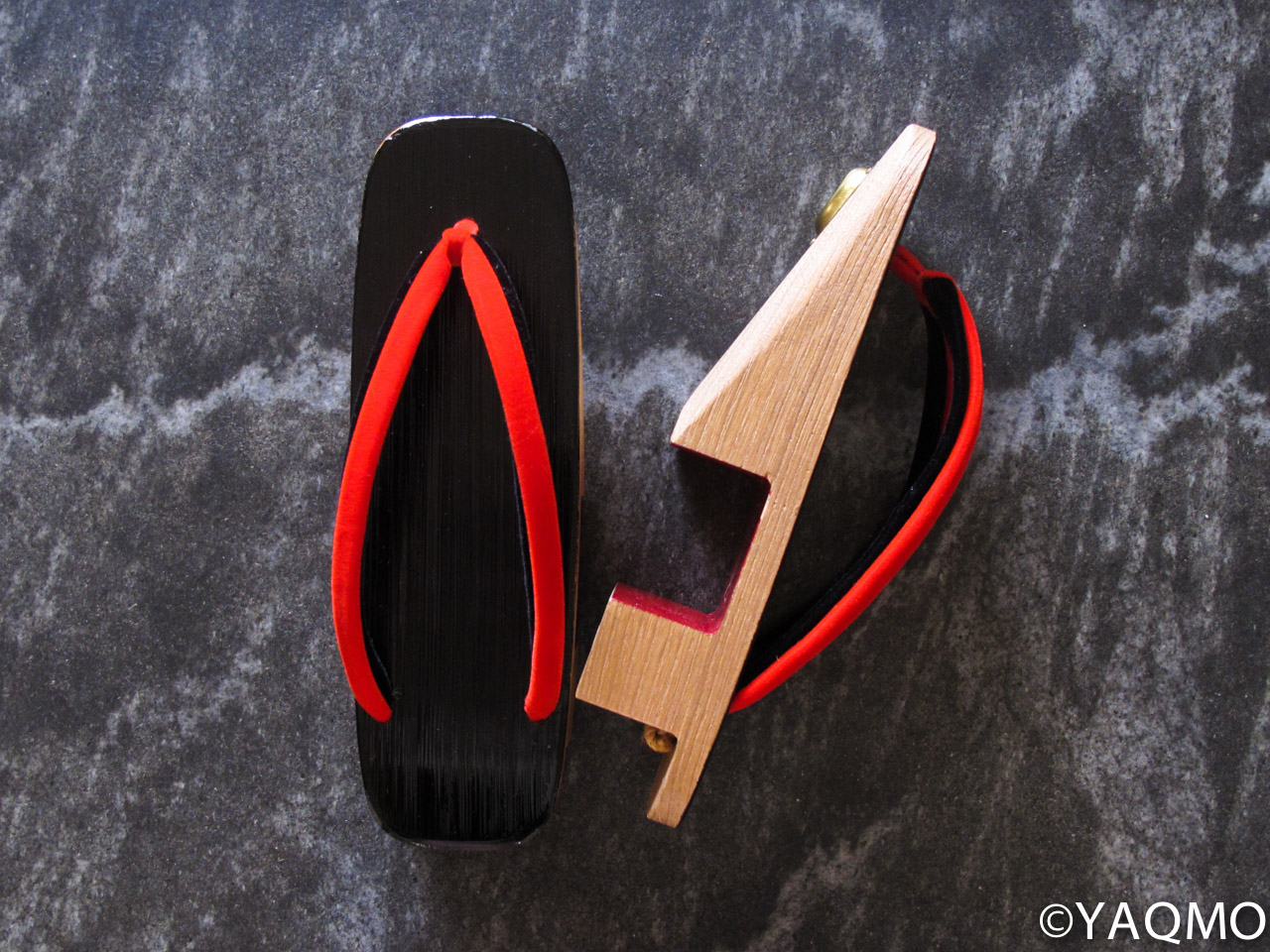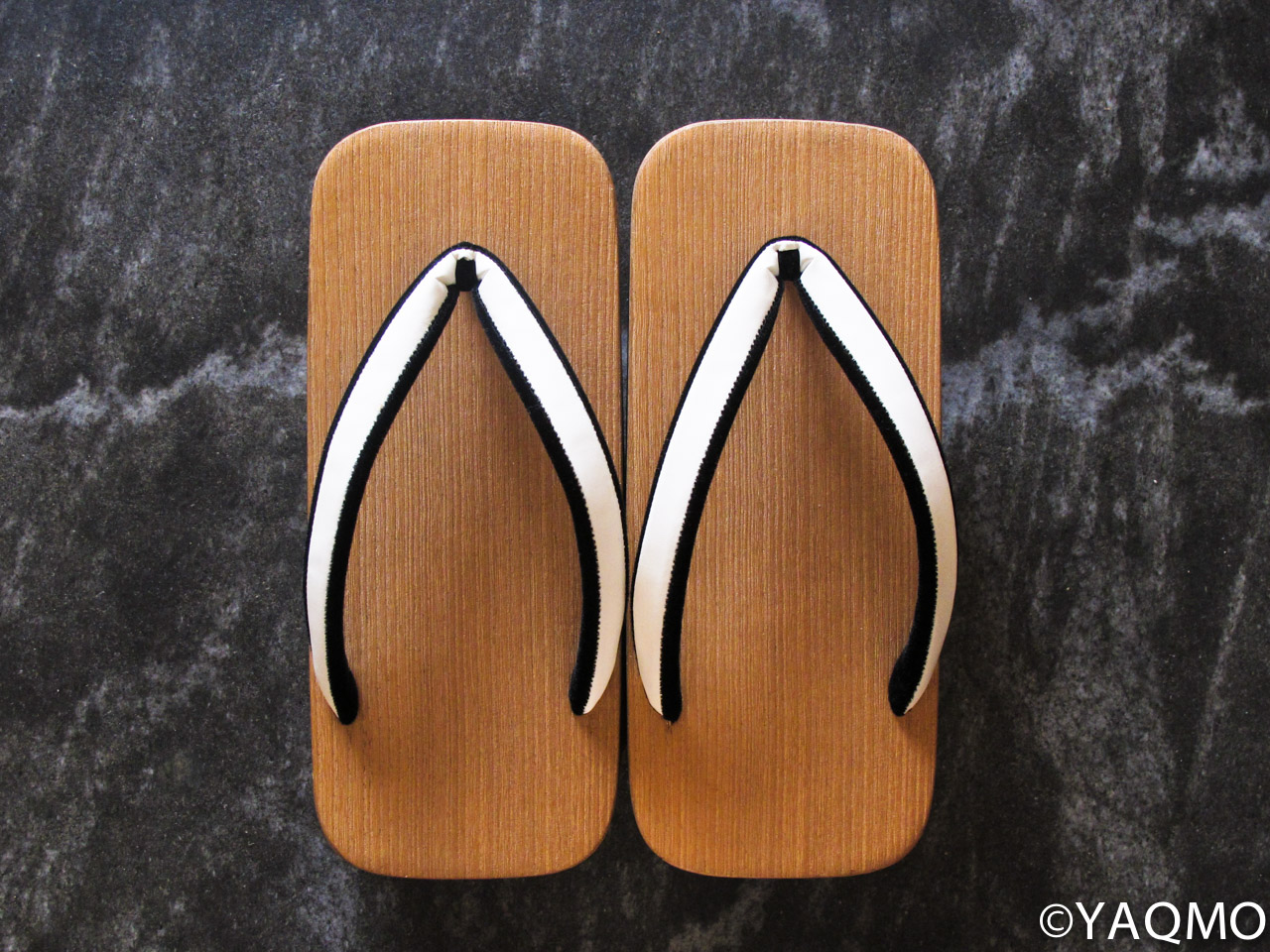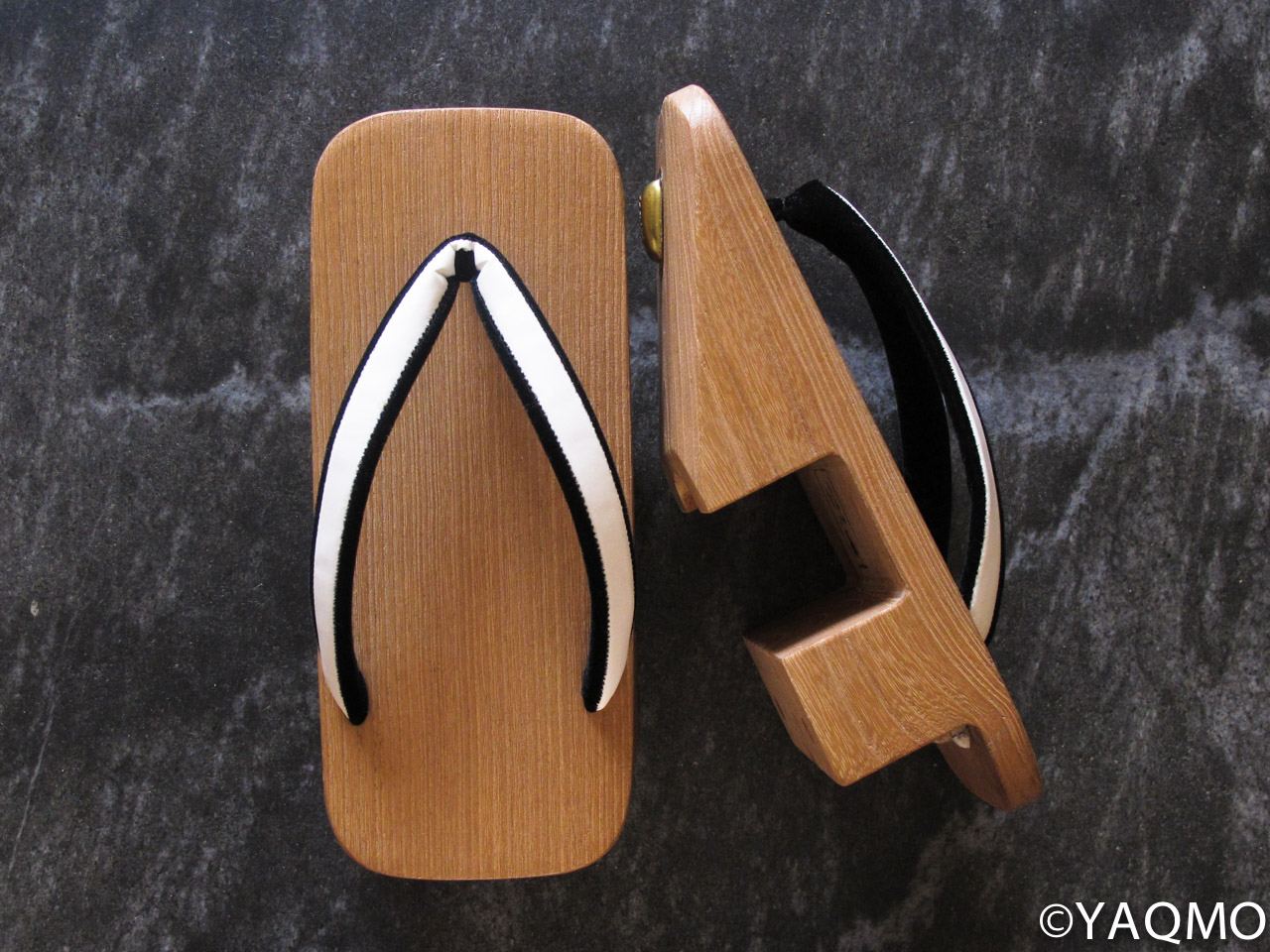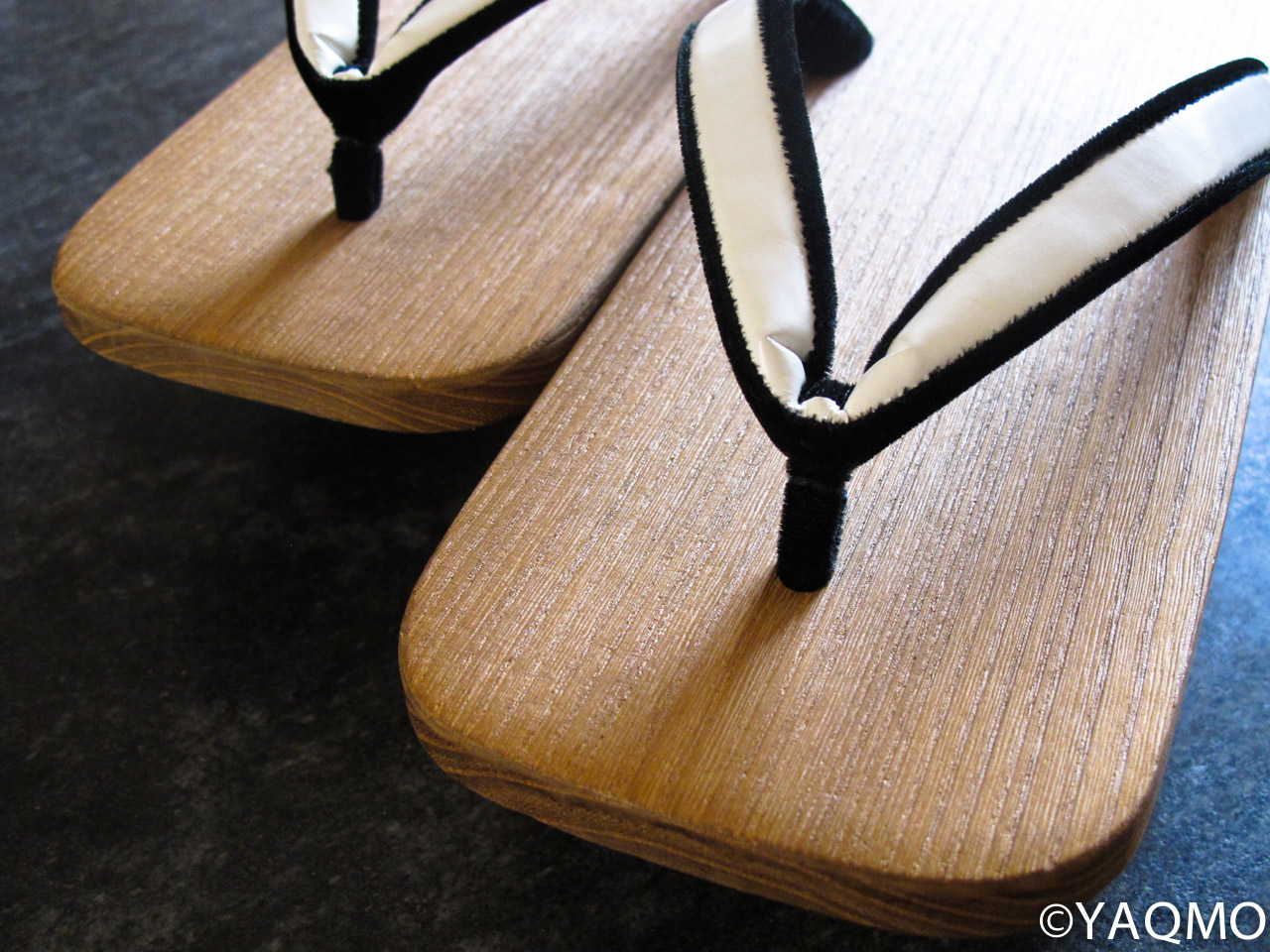Traditional Japanese footwear comes in a variety of styles and materials all tailored for different age, gender, profession, occasion, and season to name a few. But one common aspect is that they all have thong toes like the flip-flops of today. These are a popular type of footwear worn by people in kimono on the streets of Japan.
However, there is another type of traditional footwear that resembles a shoes or enclosed clogs that date back to the 6th century. These shoes were for the ruling class and even to this day, members of the Imperial Household wear them with a traditional ceremonial dress at a very special occasions. Surely not for everyday people.
So let’s get back to the Japanese thong toed footwear. Generally speaking, there are two types, zori and geta. Zori comes in a variety of materials, silk, leather, synthetics, etc., and worn for casual to formal occasions.
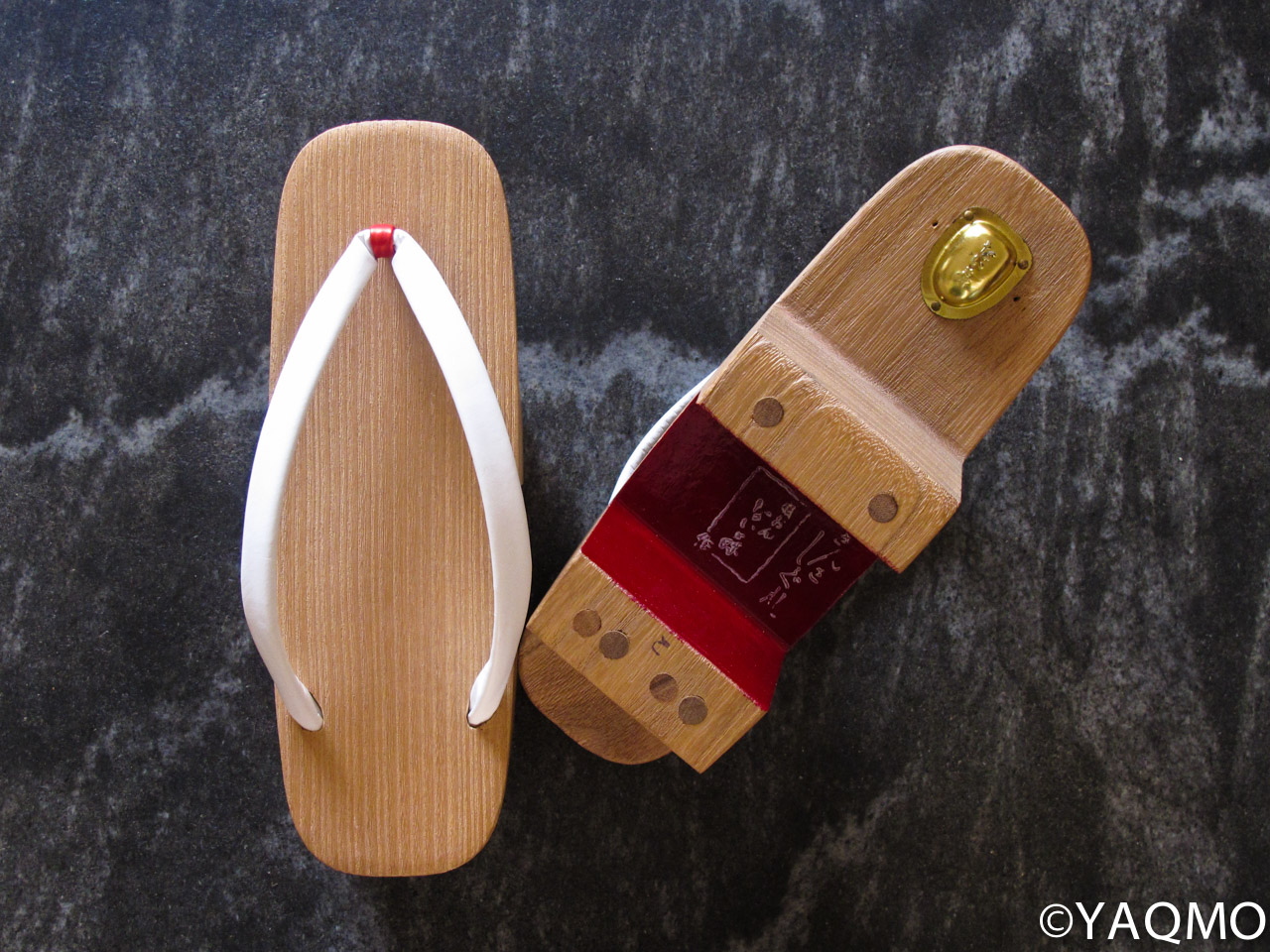
Above are women’s stylish geta, made of high-quality, lightweight paulownia wood with leather thongs. This type of geta is applicable for a smart casual occasion and worn with a tabi, a traditional Japanese socks.
Geta, on the other hand, is all made of wooden soles and worn for casual occasions only. This is why geta is the best match with yukata, a casual summer kimono for both women and men. It has become a fad nowadays for young people to wear yukata and geta to attend summer fireworks and festivals. If you see many people wearing yukata on trains, you know there is a firework that night.
So if you want to try out the geta, summer time is our recommendation. But one note of caution, even though it has thongs and looks similar to flip-flops, wearing them is an incomparable experience and need some time getting used to walking in them.
Look closely, the thong toe hole is in the front center of the flat wooden platform, this allows geta to be worn interchangeable with left or right foot. What this means is that the foot will not be in the center. Geta are made narrow for women and will end up with foot overhanging to one side, for men this is not too much of a concern because of the wide wooden platform. Another point in fitting geta is to choose the size two to three centimeters shorter than your foot so that the heels overhangs in the back of the platform. This will align the center of gravity to the back teeth of the sole and makes walking easier.
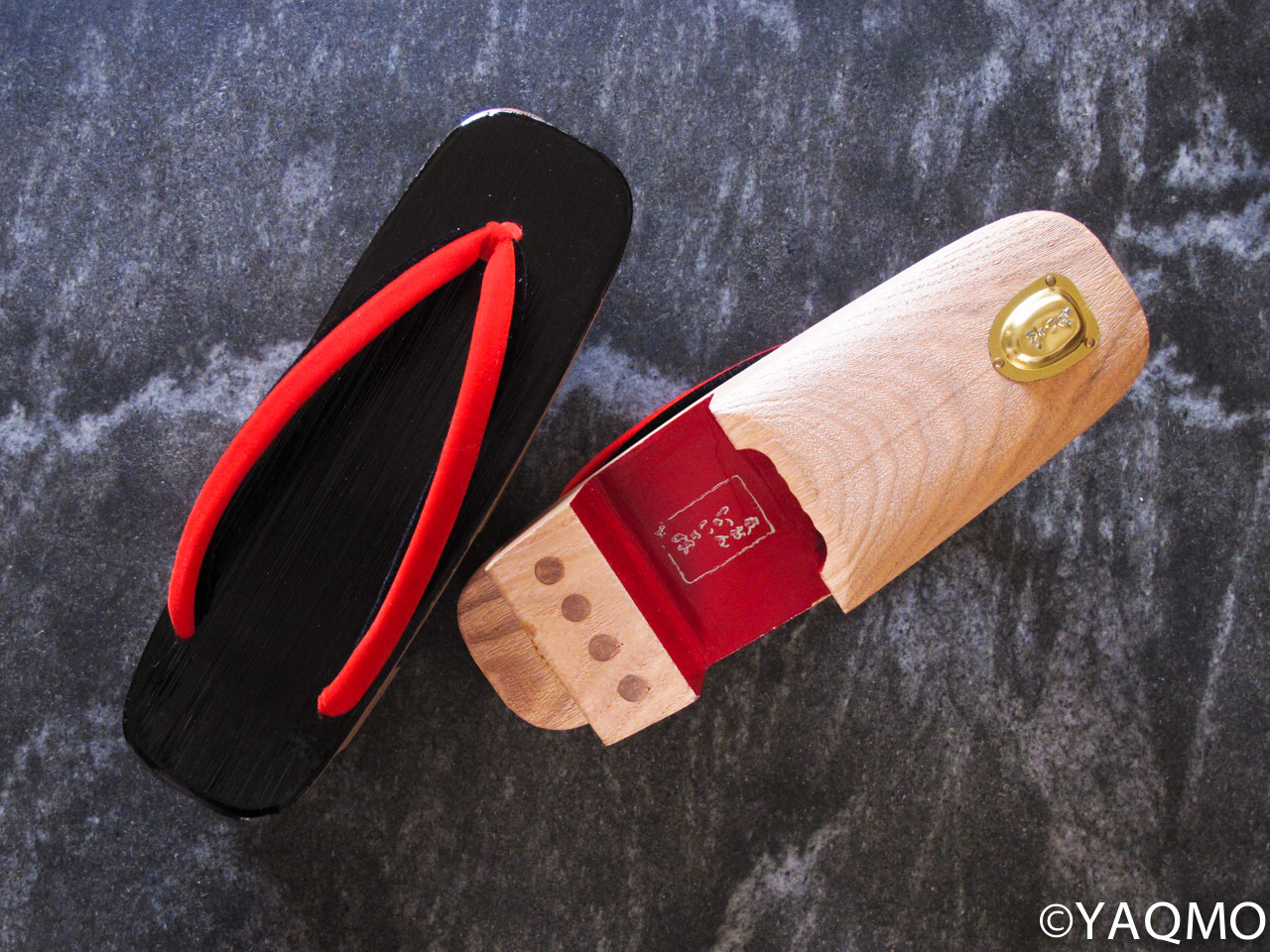
Above are women’s casual geta. This type of geta is worn barefoot and matches with yukata, a casual summer kimono.
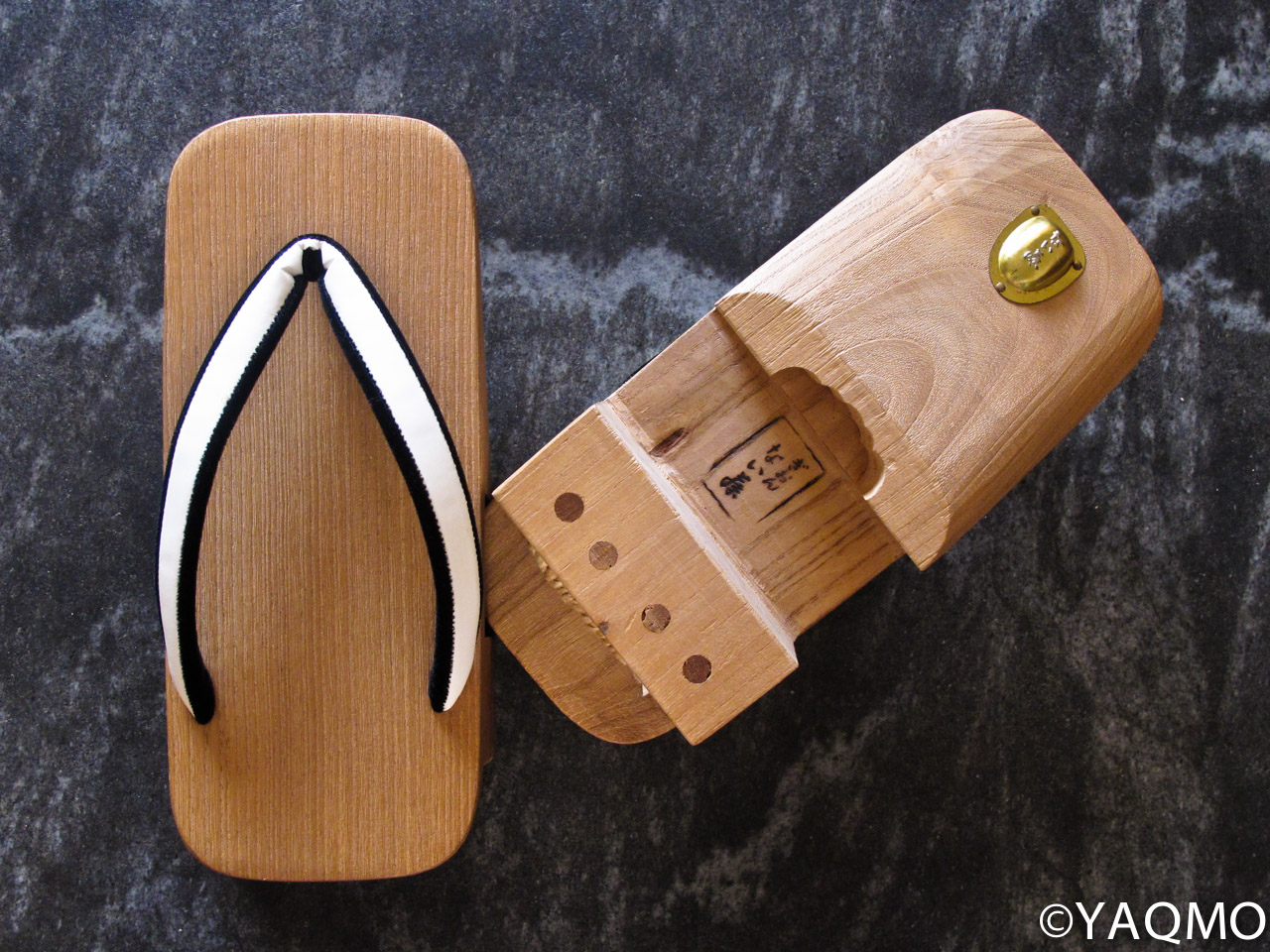
Above are men’s geta, made of high-quality, lightweight paulownia wood with leather and cloth thongs. Geta for men are always for casual kimonos and never used for any formal occasions.
To be able to walk or run in comfort will take some time even for some Japanese, but geta will look great with yukata and even with jeans! Master craftsmen in Kyoto crafted the geta pictured here.

